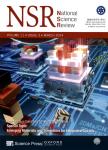Learning physical characteristics like animals for legged robots
作者机构:Key Laboratory of Robotics and SystemsHarbin Institute of Technology School of ComputingUniversity of Leeds
出 版 物:《National Science Review》 (国家科学评论(英文版))
年 卷 期:2023年第10卷第5期
页 面:22-37页
核心收录:
学科分类:08[工学] 080202[工学-机械电子工程] 0802[工学-机械工程] 0836[工学-生物工程] 0811[工学-控制科学与工程]
基 金:supported by the National Key Research and Development Program of China (2019YFB1309500) the National Natural Science Foundation of China (91948202 and51822502) the Fundamental Research Funds for the Central Universities (HIT.BRETIV.201903) the Fundamental Research Funds for the Central Universities (FRFCU9803500621)
主 题:legged robot unsupervised learning environmental perception cognitive learning
摘 要:Physical characteristics of terrains,such as softness and friction,provide essential information for legged robots to avoid non-geometric obstacles,like mires and slippery stones,in the wild.The perception of such characteristics often relies on tactile perception and vision prediction.Although tactile perception is more accurate,it is limited to close-range us e;by contrast,establishing a supervised or self-supervised contactless prediction system using computer vision re quires adequate labeled data and lacks the ability to adapt to the dynamic environment.In this paper,we simulate the behavior of animals and propose an unsupervised learning framework for legged robots to learn the physical characteristics of terrains,which is the first report to manage it online,incrementally and with the ability to solve cognitive conflicts.The proposed scheme allows robots to interact with the environment and adjust their cognition in real time,therefore endowing robots with the adaptation ability.Indoor and outdoor experiments on a hexapod robot are carried out to show that the robot can extract tactile and visual features of terrains to create cognitive networks independently;an associative layer between visual and tactile features is created during the robot’s exploration;with the layer,the robot can autonomously generate a physical segmentation model of terrains and solve cognitive conflicts in an ever-changing environment,facilitating its safe navigation.



